Image Gallery: Evolution's Most Extreme Mammals
Violent musk-ox
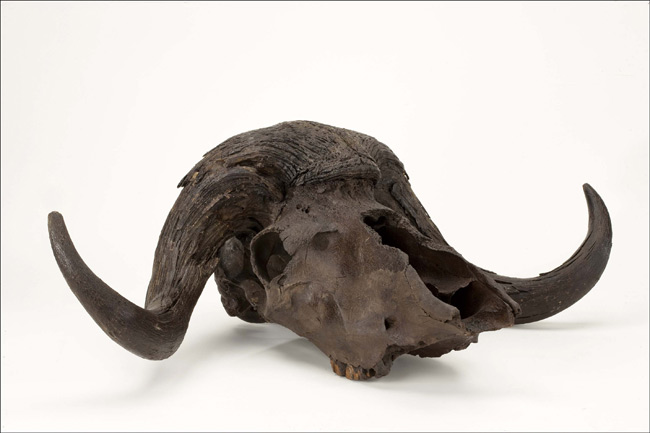
Bootherium bombifrons, an extinct musk-ox which lived 780,000–11,000 years ago, was one of at least four such species found in North America during the Pleistocene; only one still lives today. Both male and female musk-oxen have four-inch-thick horns, and the battles between males during mating season can be spectacularly violent in living musk-oxen. This specimen will be part of "Extreme Mammals: The biggest, smallest, and most amazing mammals of all time," an exhibition opening May 16, 2009, at the American Museum of Natural History (AMNH) in New York.
Sugar glider
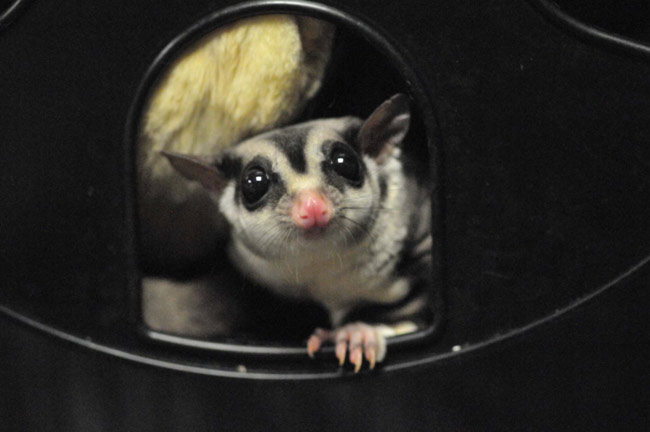
Sugar gliders (Petaurus breviceps) are mammals that glide through the air thanks to a membrane of skin connecting their front and back legs, keeping their bodies aloft like parachutes. While they may look like American flying squirrels, they are actually marsupials and are more closely related to kangaroos and koalas. Live sugar gliders will be part of the "Extreme Mammals" exhibition at the AMNH.
Koala
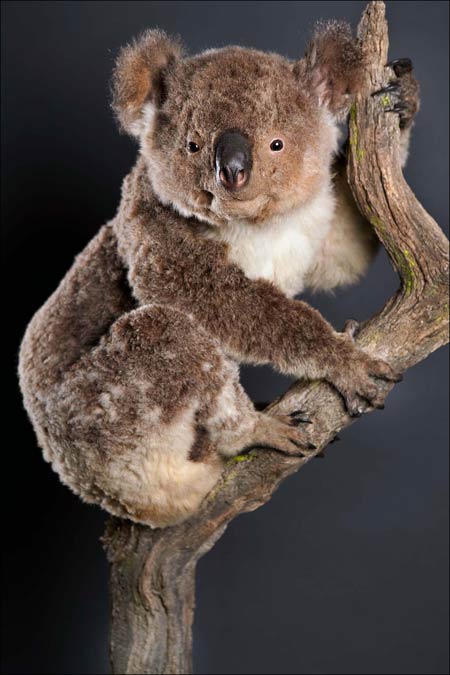
Koalas live in the eucalyptus forests of eastern Australia. Though adults are fairly large, a newborn baby koala weighs less than 1/10th of an ounce (2 grams)—so small, it would easily fit in a teaspoon. Although many people refer to koalas as “bears,” these marsupials instead are closely related to kangaroos and opossums. Marsupial babies are born very immature and most development occurs while drinking milk, often in a pouch on the mother’s belly.
Honey bear
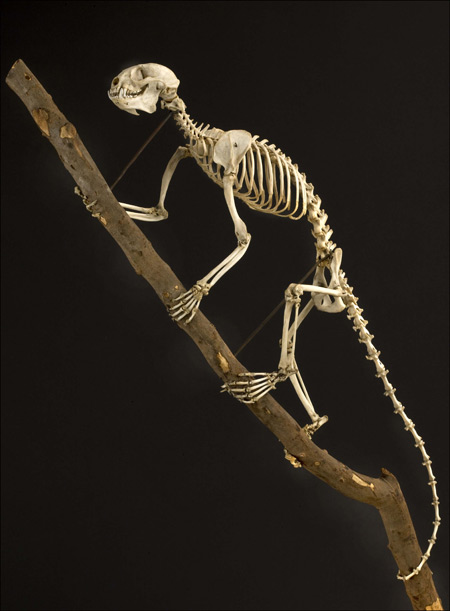
Also known as the honey bear, the nocturnal kinkajou is actually a member of the raccoon family and is native to the tropical tree canopies of Central and South America. Its prehensile tail, unique among raccoons, is used as an extra limb for grasping and holding objects, and as a blanket in which to wrap itself while it sleeps. In fact, the kinkajou’s tail makes up nearly half the animal’s total length (80 centimeters on average). Its tongue is also especially long and thin, enabling it to reach into flowers for nectar and beehives for honey.
Sharp-scaled species
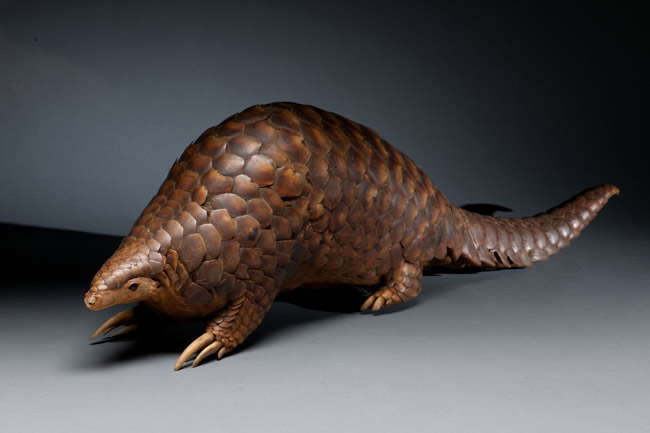
Chinese pangolin (Manis pentadactyla)-- This endangered species of pangolin, native to the forests and grasslands of central and southeast Asia, is covered with scales made from keratin. If frightened, these pangolins roll up and extend their scales into a phalanx of sharp blades, using strong muscles in their skin. Moveable scales are not their only defense, however: like skunks, pangolins can target attackers with jets of foul-smelling liquid. This specimen will be part of the "Extreme Mammals" exhibition at AMNH. © AMNH/D. Finnin
Proboscis monkey
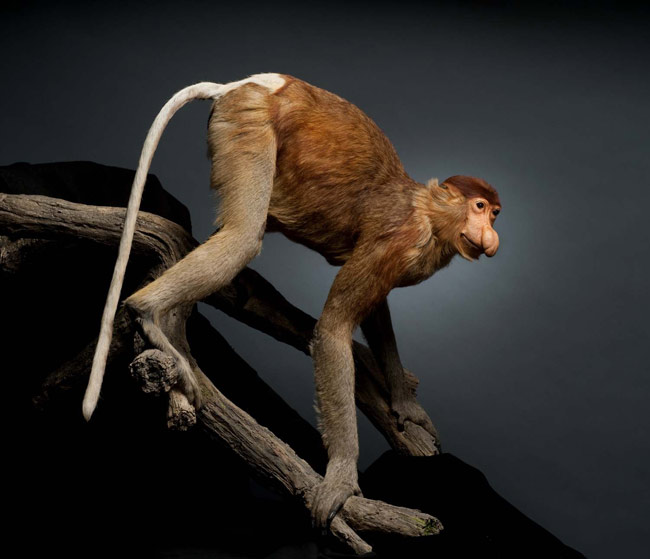
Endangered proboscis monkeys live on the coasts and near rivers in Brunei, Malaysia, and Indonesia. The nose of a male can grow up to 7 inches (18 centimeters) and is believed to attract females, making it one of many mammals that show startling differences between sexes, often to attract mates.
Woolly monkey
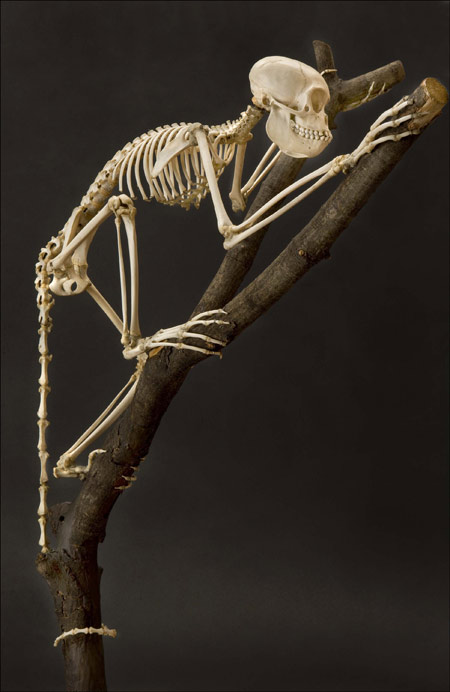
Found only in the tropical forests of South America, woolly monkeys belong to the Atelidae, a group of Central and South American primates whose ancestors are thought to have evolved first in Africa. The fossil record, though sparse, suggests that the ancestor of all New World primates then dispersed from Africa to South America about 40 million years ago, probably floating over the ocean on rafts of vegetation that ripped free in large storms. Once in South America, these tree-dwellers evolved to display amazing diversity and specialized traits, including long, strong arms and prehensile tails that can reach thirty inches in length and have flexible, hairless tips and skin grooves for gripping tree branches in modern wooly monkeys.
Sign up for the Live Science daily newsletter now
Get the world’s most fascinating discoveries delivered straight to your inbox.
Spiny monotreme
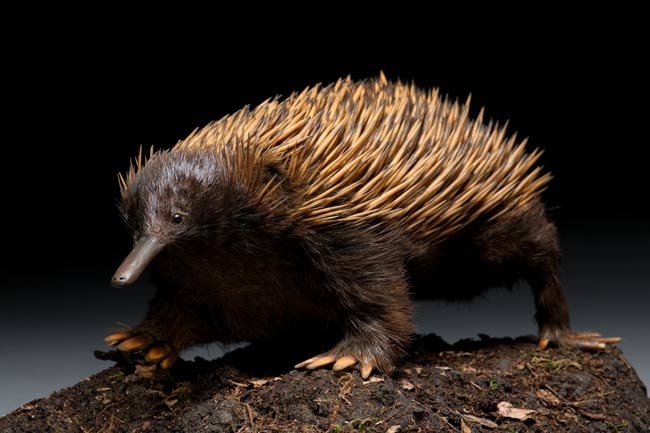
When a nursing baby short-beaked echidna begins to grow spines, it leaves its mother s pouch, but it comes back to nurse at her milk patches for several months. Native to Tasmania and New Guinea, echidnas are monotremes — unlike most other mammals, monotremes never evolved live birth, but instead lay eggs like their amniote ancestors. Monotremes produce milk for their young, but they lack nipples; instead, their milk oozes out of ducts of their mammary glands onto specialized patches of skin. This specimen will be part of the "Extreme Mammals" exhibition at the AMNH.
Dog-jawed carnivore
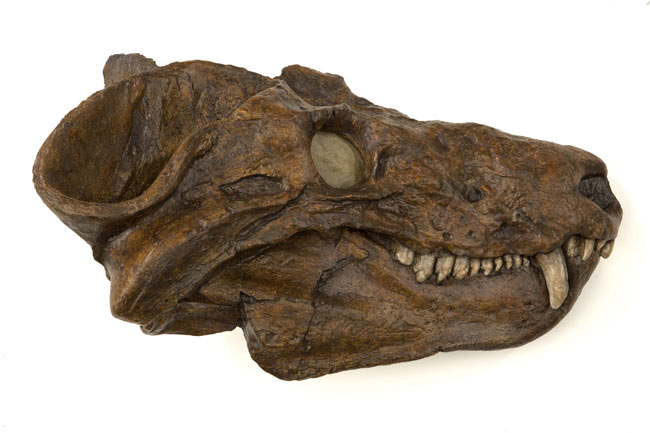
Cynognathus was a cynodont, an early relative of mammals that lived during the early to middle Triassic period, roughly 230–245 million years ago. Its original scientific name, which means "dog jaw," can be attributed to its strikingly mammalian attributes; though its jaw was made up of multiple bones (mammals have a single lower jaw bone), the carnivorous cheek teeth sliced past each other like the blades of scissors to suggest chewing, an adaptation found almost exclusively in later mammals.
Tasmanian wolf
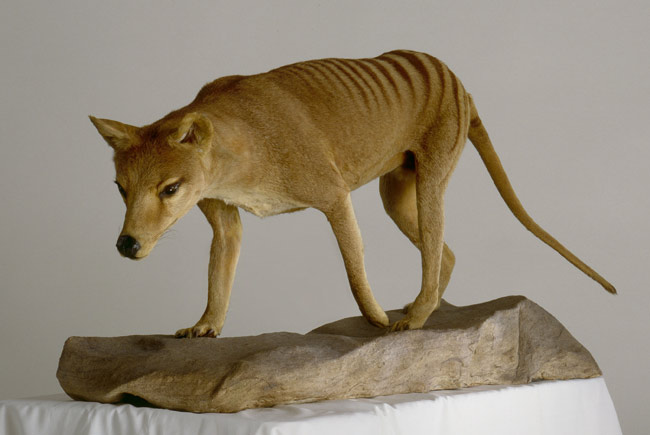
Thought to be extinct nearly sixty-five years, the Tasmanian wolf was neither a species of wolf nor a dog, but the largest carnivorous marsupial in recent times. Its habitat, which once stretched throughout mainland Australia, was reduced to the island of Tasmania by the 19th century. Humans believed that this nocturnal “tiger,” so-called for its stripes, preyed upon domestic sheep and poultry (in fact, it preferred birds, rodents, and possums, and other small marsupial mammals) and therefore hunted it extensively, leading to its extinction.
Tasmanian devil
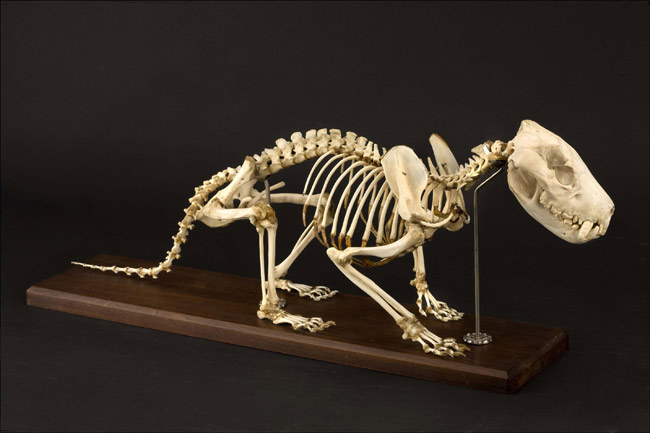
The endangered Tasmanian devil, found on the Australian island of Tasmania, only grows to about 1 foot tall but has the strongest bite-force of any mammal of its size. This species has recently fallen victim to an unusual, infectious cancer, called devil facial tumor disease, transmitted during fights; this contagion has contributed in part to the reduction of the Tasmanian devil population by half in the last decade.











